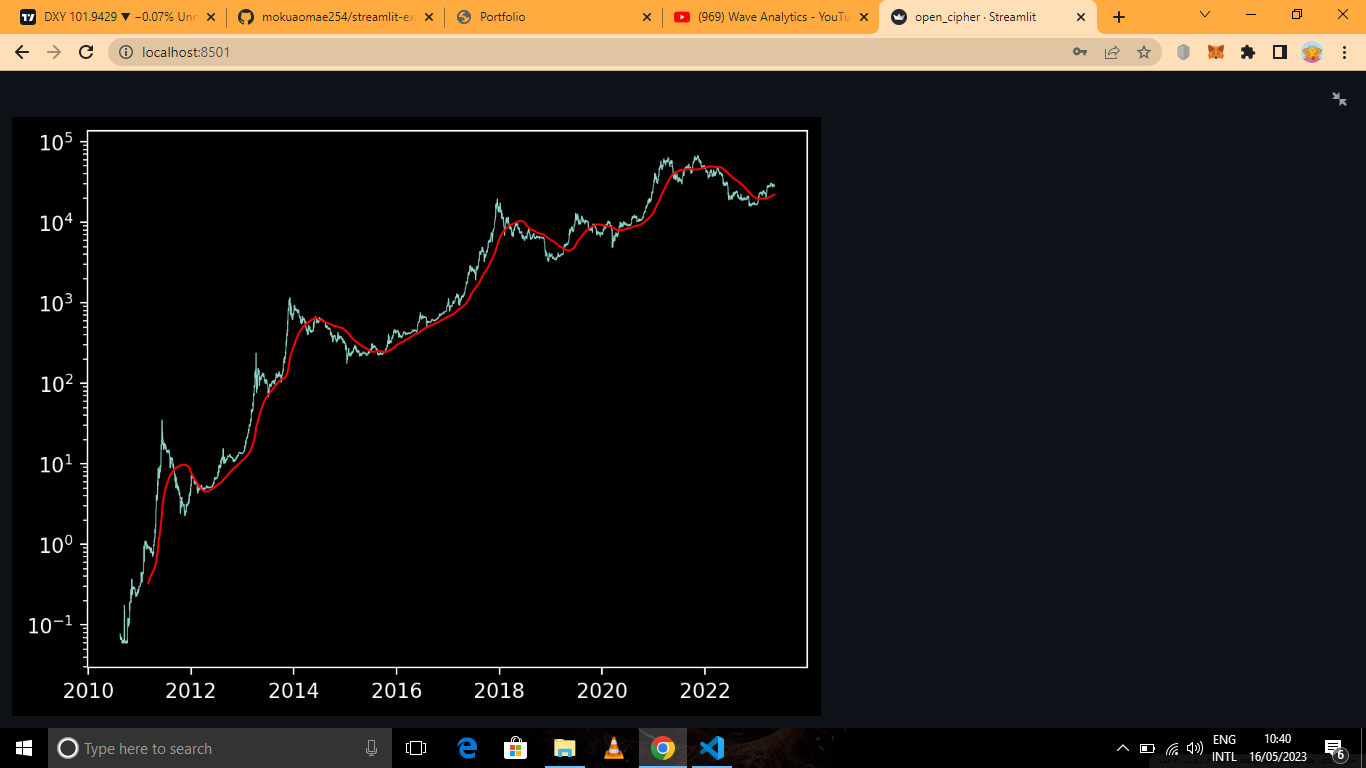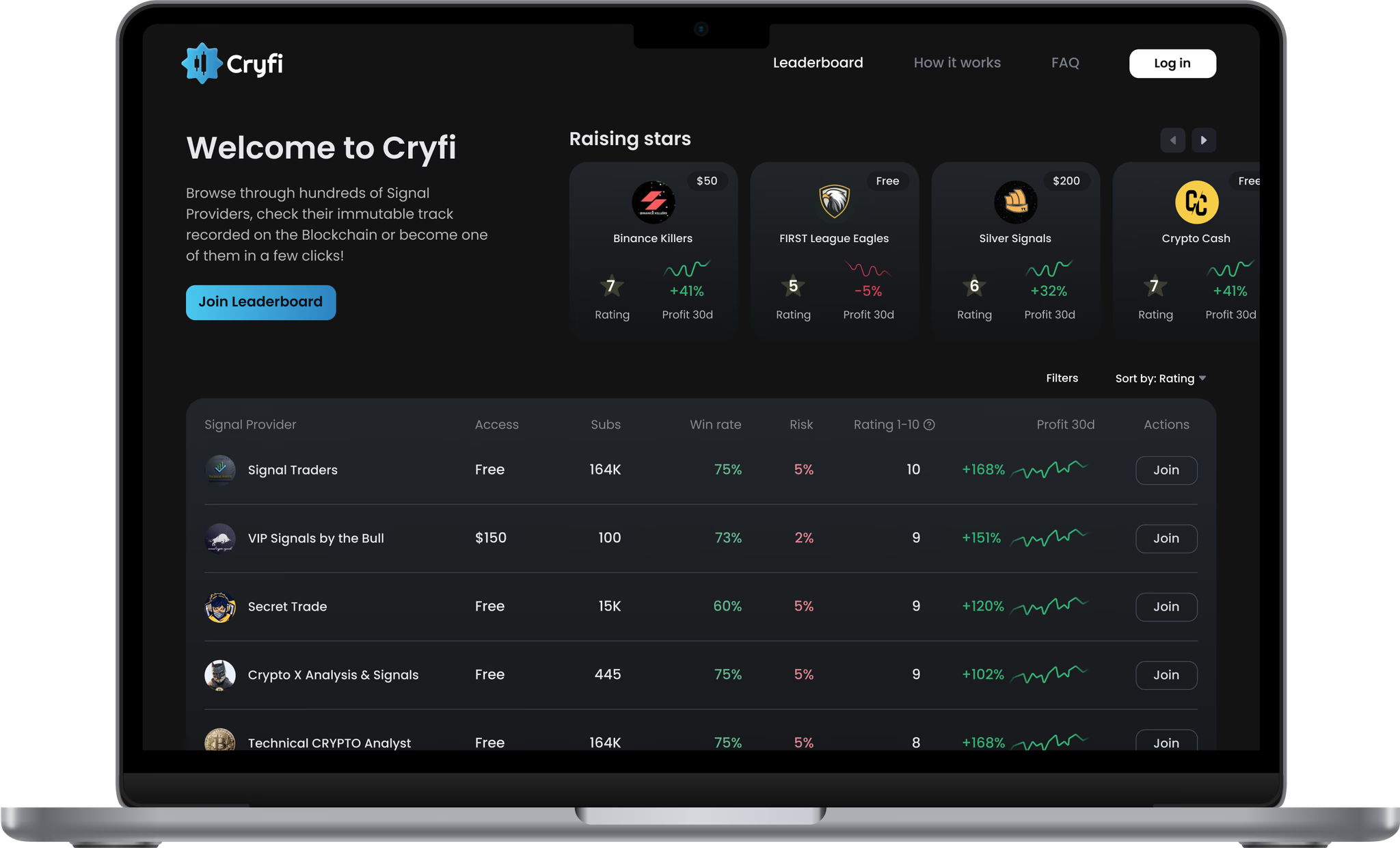About memy stats
Information About me
Hi, my name is Mokua Omae Obare and I am a Blockchain developer,Crypto Market Analyst and Quant Developer. With my skills and expertise, I have been able to make a significant impact in the world of technology and finance.
As a Blockchain Developer, I am passionate about building decentralized applications (Dapps) that empower individuals and businesses to achieve greater efficiency, security, and transparency in their operations. Through my work, I have been able to harness the power of blockchain technology to create innovative solutions for various industries.
In addition to my work as a Blockchain Developer, I am also an Algorithmic Trader.
I use my knowledge of sound financial concepts to develop financial models that enable me to trade in cryptocurrencies and other financial instruments. This has given me a deeper understanding of the financial world and has allowed me to make informed decisions when trading.
With my half-decade experience in the cryptocurrency space, I bring a wealth of knowledge and expertise to the table.
Overall, I am passionate about using technology to create positive change in the world. Whether through blockchain development or algorithmic trading, I am committed to making a meaningful impact in the industry and beyond.
100+
Projects
Completed
5+
Years of
experience
50+
Happy
Clients
100+
Customer
reviews
My Skills
My Timeline
May 2022 - June 2022
Lead Blockchain Developer - Open Cipher
Project: Decentralized music platform
• Used the web3UI kit from moralis to build the Quant
• Uploaded the content creators music to IPFS (interplanetary file system) storage
• Added more functionalities to my Dapp using the moralis cloud functions
• Used open zeppelin templates to write code for ERC 721 and ERC 1155 NFTs albums
• Got acknownledgement from the University of Masinde Muliro and Technology as a revolutionary idea and got seed funding.
June 2022 - July 2022
Lead Blockchain Developer -Open Cipher
Project: Decentralized video streaming platform
• Used the web3UI kit from moralis to build the Quant
• Uploaded the content creators music to IPFS (interplanetary file system) storage
• Added more functionalities to my Dapp using the moralis cloud functions
August 2022 - December 2022
Lead Blockchain Developer - Open Cipher
Project: Cryptocurrency price aggregator (KYC DEX)
• Used the web3UI kit from moralis to build the Quant
• Utilized the 1inch moralis plugin to enable the swap function of tokens
• Added more functionalities to my Dapp using the moralis cloud functions
January 2023 - current
Algorithmic Trader -Open Cipher
Project: Investor Connect
• Used python to scrap data for the top 100 cryptocurrencies and used the anaconda IDE for development.
• Used the nasdaq datalink API to fetch real-time data for bitcoin that was fed to an investing strategy.
• Used the streamlit framework to build an interactive user interface.
2019 - 2023
Computer Science Degree - Masinde Muliro University of Science and Technology
The university acknowledged the Decentralized music platform project as a revolutionary idea and got seed funding. I graduated with a Bachelor's degree in Computer Science, achieving Second Class Lower honors.
March 2023 - present
Partnership Manager -CRYFI
Project:Cryfi : An onchain signal marketplace
• Reaching out to potential crypto signal providers for partnerships.
• Helping signal providers with the onboarding process.
• Uploading signals with sound risk to reward ratio on Cryfi.
• Holding meetings on every Monday with the founder and CEO at Cryfi to give my progress report.
• Scheduling meetings on calendly and google meet with potential partners.
• Here is a link to our startup: https://cryfi.app/
My PortfolioMy Work
Here is some of my work that I've done in various programming languages.
My BlogsMy Blogs

What is an Altcoin Season?
Get ready to discover the exciting world of altcoin seasons! An altcoin season refers to a period in the cryptocurrency market when alternative coins surge in value and outperform Bitcoin. This phenomenon has captivated investors and traders alike, presenting exciting opportunities for significant gains. Let's explore what makes altcoin seasons so captivating! Altcoin seasons are often driven by a combination of factors such as investor sentiment, market hype, and technological advancements. During these periods, alternative cryptocurrencies, also known as altcoins, tend to experience significant price gains compared to Bitcoin, which is the most well-known and established cryptocurrency. One of the main drivers of altcoin seasons is the hype surrounding new and upcoming projects in the cryptocurrency space. These projects often promise innovative solutions and advancements that have the potential to disrupt traditional industries and improve various aspects of our daily lives. As news and updates about these projects spread, investor interest and demand for their associated altcoins tend to increase, leading to a surge in their value.
Altcoin seasons are often driven by a combination of factors such as investor sentiment, market hype, and technological advancements. During these periods, alternative cryptocurrencies, also known as altcoins, tend to experience significant price gains compared to Bitcoin, which is the most well-known and established cryptocurrency. One of the main drivers of altcoin seasons is the hype surrounding new and upcoming projects in the cryptocurrency space. These projects often promise innovative solutions and advancements that have the potential to disrupt traditional industries and improve various aspects of our daily lives. As news and updates about these projects spread, investor interest and demand for their associated altcoins tend to increase, leading to a surge in their value.
Additionally, altcoin seasons are often fueled by investor sentiment and overall market conditions. When there is a general feeling of optimism in the cryptocurrency market, investors may be more willing to take risks and invest in altcoins. This can create a positive feedback loop, as increased investment can further drive up the price of altcoins, leading to even more investor interest. Furthermore, technological advancements in the cryptocurrency space can also play a significant role in altcoin seasons. New and improved technologies, such as faster transaction processing times or increased scalability, can make certain altcoins more attractive to investors and traders. As a result, these altcoins may experience a surge in demand and price.
Altcoin seasons are not guaranteed, and they tend to be unpredictable. However, they can present exciting opportunities for investors and traders looking to make significant gains in the cryptocurrency market. It's essential to note that investing in altcoins can be risky, as the market is volatile and prices can fluctuate rapidly. Therefore, it's crucial to do your research and assess your risk tolerance before investing in any altcoins. In conclusion, altcoin seasons can be an exciting time in the cryptocurrency market, with the potential for significant gains. However, it's crucial to approach altcoin investing with caution and to always conduct thorough research before making any investment decisions.

Web3 Tech stack
Interested in the latest advancements in decentralized applications? The Web3 Tech Stack is revolutionizing the way Dapps are built and operated on the blockchain. With Web3, developers can create applications that are more secure, transparent, and decentralized than ever before. Explore the future of Dapp development and experience the latest advancements in this rapidly evolving industry with the Web3 Tech Stack! Certainly! Here's a longer version:
Decentralized applications, or Dapps, are applications that run on a blockchain network, making them secure, transparent, and resistant to censorship. The Web3 Tech Stack is a collection of technologies that enables the development and operation of Dapps on the blockchain. With the Web3 Tech Stack, developers can create applications that are more decentralized, more interoperable, and more user-friendly than ever before. One of the key features of the Web3 Tech Stack is the use of smart contracts. Smart contracts are self-executing contracts with the terms of the agreement between buyer and seller being directly written into lines of code. They run on a blockchain network, making them transparent, secure, and tamper-proof. With smart contracts, Dapp developers can create applications that automate complex transactions and eliminate the need for intermediaries.
Another important component of the Web3 Tech Stack is decentralized storage. Traditional cloud storage is centralized, meaning that the data is stored on servers owned by a single company or organization. Decentralized storage, on the other hand, uses a network of nodes to distribute data across the network, making it more secure and resistant to censorship. This can be particularly useful for applications that require secure data storage, such as healthcare or financial applications. In addition, the Web3 Tech Stack includes decentralized identity and authentication protocols, which allow users to maintain control over their own identities and data. This is in contrast to traditional applications, which often require users to provide personal information to a central authority for authentication. With decentralized identity, users can have more control over their personal data, which can help protect against identity theft and data breaches.
The Web3 Tech Stack also includes a variety of other technologies and protocols, such as decentralized messaging and decentralized finance. Together, these components enable the creation of truly decentralized applications that operate on the blockchain network. In conclusion, the Web3 Tech Stack is revolutionizing the way Dapps are built and operated on the blockchain. With the use of smart contracts, decentralized storage, decentralized identity, and other technologies, developers can create applications that are more secure, transparent, and decentralized than ever before. As the blockchain industry continues to evolve, we can expect to see even more advancements in the Web3 Tech Stack and the development of increasingly innovative Dapps.

Become a Blockchain Developer in 30 Days
Keen on becoming a blockchain developer? With dedication and the right resources, you can achieve this in just 30 days. Blockchain technology has the potential to transform a variety of industries, such as finance, healthcare, and real estate. As a blockchain developer, you'll have the chance to work on innovative projects and be a part of this revolutionary technology. Sure, here's a longer version:
Are you interested in pursuing a career as a blockchain developer? With the right mindset, dedication, and resources, you can become a blockchain developer in just 30 days. Blockchain technology is rapidly changing the way we live and work, and becoming a blockchain developer can offer exciting career opportunities. Blockchain technology has the potential to transform a variety of industries, including finance, healthcare, real estate, and supply chain management. As a blockchain developer, you can work on innovative projects that can change the way we do business and solve real-world problems.
To become a blockchain developer, you'll need to have a solid understanding of programming fundamentals, such as data structures, algorithms, and object-oriented programming. Additionally, you'll need to learn about blockchain technology and the specific tools and frameworks used in blockchain development. There are many resources available online to help you get started with blockchain development. Online courses, tutorials, and forums can provide a wealth of information and guidance on programming and blockchain development. Some popular online platforms for blockchain development include Ethereum, Hyperledger Fabric, and Corda.
Once you've acquired the necessary knowledge and skills, you can start building your own blockchain applications. This can involve creating smart contracts, developing decentralized applications (Dapps), or even launching your own cryptocurrency. By building your own projects, you can gain hands-on experience with blockchain technology and develop a portfolio of work to showcase your skills to potential employers. To land a job as a blockchain developer, it's important to network with others in the blockchain community and participate in blockchain-related events and conferences. Joining online communities and attending meetups can also provide valuable connections and insights into the industry.
In conclusion, becoming a blockchain developer can offer exciting opportunities to work on innovative projects and be a part of a revolutionary technology. With the right mindset, dedication, and resources, you can achieve this goal in just 30 days. By acquiring the necessary skills, building your own projects, and networking with others in the blockchain community, you can launch a successful career in blockchain development.

Does the Bitcoin 4 year cycle hold water?
Curious about the Bitcoin 4-year cycle's reliability? While it's tempting to use this theory to predict future price movements and make investment decisions, there are many factors that can affect the price of Bitcoin. Past performance is not a guarantee of future results. Before investing, it's important to do your own research and consider a variety of factors. Sure, here's a longer version:
Are you curious about the reliability of the Bitcoin 4-year cycle? The Bitcoin 4-year cycle, also known as the Halving cycle, is a popular theory that suggests that Bitcoin experiences a price surge every four years due to the reduction in block rewards for miners. While this theory has held up in the past, it's important to understand that past performance is not a guarantee of future results. There are many factors that can affect the price of Bitcoin, including market sentiment, regulatory changes, technological advancements, and competition from other cryptocurrencies. While the Halving cycle can provide some insights into Bitcoin's historical price movements, it's important to consider a variety of factors when making investment decisions.
It's tempting to use the Bitcoin 4-year cycle to predict future price movements and make investment decisions, but it's important to do your own research and understand the risks involved. Investing in Bitcoin and other cryptocurrencies can be highly speculative and volatile, and there is no guarantee of a return on investment. Before investing in Bitcoin or any other cryptocurrency, it's important to do your own research and understand the technology, the market, and the risks involved. You should consider factors such as the team behind the cryptocurrency, the development roadmap, the market size, and the regulatory environment.
One of the best ways to stay informed about the cryptocurrency market is to follow trusted sources of information, such as reputable news outlets, industry experts, and social media influencers. It's also important to diversify your investments and not put all your eggs in one basket. In conclusion, while the Bitcoin 4-year cycle can provide some insights into historical price movements, it's important to consider a variety of factors when making investment decisions. Before investing in Bitcoin or any other cryptocurrency, it's important to do your own research, understand the risks involved, and diversify your investments. Following trusted sources of information and staying informed about the market can also help you make informed investment decisions.

2023 Crypto market outlook
Wondering about the 2023 crypto market outlook? Keep in mind that the market can be volatile and unpredictable, and many factors can affect it. Stay informed, do your research, and consider multiple factors before making investment decisions in the rapidly evolving world of cryptocurrency. Sure, here's a longer version:
Are you wondering about the 2023 crypto market outlook? While it's natural to be curious about the future of the cryptocurrency market, it's important to keep in mind that the market can be volatile and unpredictable, and there are many factors that can affect it. Some of the factors that can affect the cryptocurrency market include changes in government regulations, advancements in technology, adoption by mainstream companies and institutions, market sentiment, and competition from other cryptocurrencies.
It's important to stay informed about the latest developments in the cryptocurrency industry, do your own research, and consider multiple factors before making investment decisions. This can include factors such as the team behind the cryptocurrency, the technology and development roadmap, the market size and potential, and the regulatory environment. One of the best ways to stay informed about the cryptocurrency market is to follow trusted sources of information, such as reputable news outlets, industry experts, and social media influencers. It's also important to diversify your investments and not put all your eggs in one basket.
Keep in mind that while cryptocurrencies can offer exciting opportunities for significant gains, they can also be highly speculative and volatile. Before investing in cryptocurrency, it's important to understand the risks involved and to only invest what you can afford to lose. It's also worth noting that while the cryptocurrency market has seen tremendous growth over the past few years, it's still a relatively new and developing industry. This means that there is still a lot of uncertainty and unpredictability in the market, which can make it difficult to predict future trends and movements.
In conclusion, while it's natural to be curious about the 2023 crypto market outlook, it's important to keep in mind that the market can be volatile and unpredictable. Stay informed, do your research, and consider multiple factors before making investment decisions in the rapidly evolving world of cryptocurrency. Investing in cryptocurrency can offer exciting opportunities, but it's important to understand the risks involved and to only invest what you can afford to lose.

Top 10 trading indicators
Interested in using trading indicators to improve your trading strategy? Discover the top 10 trading indicators commonly used by traders to make informed trading decisions. From moving averages to relative strength index, we'll delve into each indicator and provide examples of how they can be used. Take your trading game to the next level with these top 10 trading indicators!
Contact MeContact
Contact me here
Feel free reachout to me using social media handles below. Lets build Dapps together to empower the society.
: Nairobi, Kenya
: Masinde Muliro University of Science and Technology
: Gusii,Swahili, English, Japanese
My BlogsMy Blogs
What is an Altcoin Season?
Get ready to discover the exciting world of altcoin seasons! An altcoin season refers to a period in the cryptocurrency market when alternative coins surge in value and outperform Bitcoin. This phenomenon has captivated investors and traders alike, presenting exciting opportunities for significant gains.
Altcoin seasons have occurred throughout the history of cryptocurrencies. The most notable example of an altcoin season occurred in 2017-2018, when Bitcoin's dominance in the market dropped from over 90% to around 40%, and altcoins such as Ethereum, Ripple, and Litecoin experienced a massive surge in price. Another altcoin season occurred in 2020, when the rise of decentralized finance (DeFi) protocols and non-fungible tokens (NFTs) sparked renewed interest in alternative cryptocurrencies and recently we had an AI fueled rally that last for four months from the first quarter of 2023.
Several factors contribute to altcoin season. Positive news and events, such as new partnerships, exchange listings, or regulatory developments, can increase market sentiment and drive up the price of altcoins. Improved investor confidence and overall bullishness in the market can also contribute to altcoin season. Additionally, the availability of new altcoins and the rise of DeFi protocols can provide investors with exciting opportunities to diversify their portfolios and potentially generate significant returns.
However, altcoin season also carries risks. Some altcoins may be highly speculative and volatile, making them prone to price fluctuations and losses. It's important to conduct thorough research and analysis before investing in any altcoin. Additionally, because altcoins often have lower liquidity and trading volume than Bitcoin, it can be more challenging to buy and sell them quickly, which can result in slippage or difficulty exiting a position. Below is a perfomance indicator proudly made by Open Cipher a quant firm in Kenya.It takes into consideration the performance of the top 100 cryptos relative to Bitcoin then generate signals on different timeframes that investors act on.
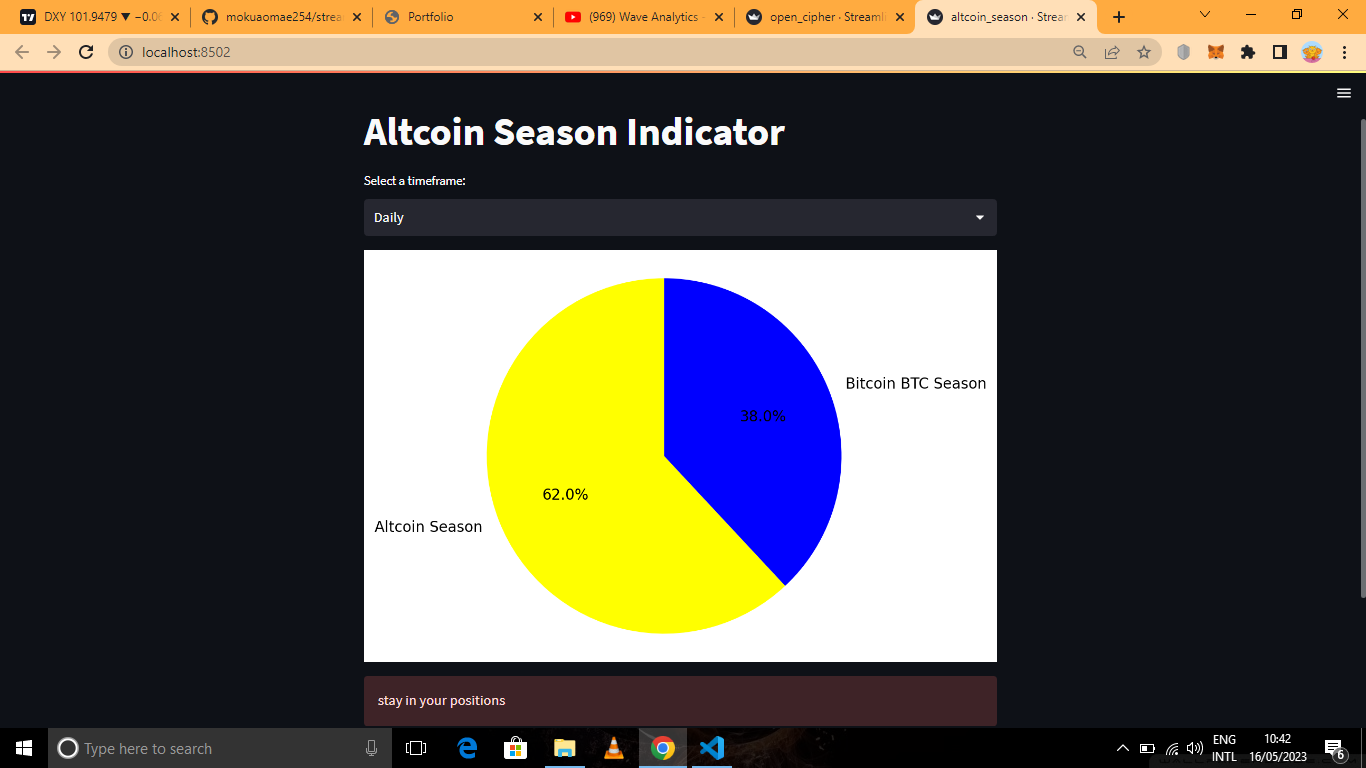
Despite these risks, altcoin season presents opportunities for traders and investors. Some traders may use technical analysis to identify trends and potential entry and exit points, while others may focus on social media sentiment or specific sectors, such as DeFi or NFTs. Additionally, altcoin season can provide opportunities for portfolio diversification and potentially higher returns than Bitcoin alone.
The future of altcoin season is uncertain, but some experts predict that the rise of decentralized applications and infrastructure, such as Web3, could lead to a more sustained altcoin season in the future. However, predicting market trends is always challenging, and it's important to stay informed and adapt to changing conditions.
In conclusion, altcoin season is a fascinating phenomenon that has captivated the cryptocurrency market. While it presents opportunities for significant gains, it also carries risks. It's important to conduct thorough research and analysis before investing in any altcoin and to develop a strategy that aligns with one's risk tolerance and investment goals. As the cryptocurrency market continues to evolve, so too will altcoin season, and it will be exciting to see what the future holds.
Web3 Tech stack
Interested in the latest advancements in decentralized applications? The Web3 Tech Stack is revolutionizing the way Dapps are built and operated on the blockchain. With Web3, developers can create applications that are more secure, transparent, and decentralized than ever before. Explore the future of Dapp development and experience the latest advancements in this rapidly evolving industry with the Web3 Tech Stack!
The Web3 Tech Stack is a collection of technologies, protocols, and tools that enable developers to build and operate decentralized applications on the blockchain. It includes several layers, including the blockchain layer, the protocol layer, the application layer, and the user interface layer. Each layer plays a critical role in ensuring that Dapps are secure, scalable, and user-friendly.
At the blockchain layer, the Web3 Tech Stack leverages the underlying blockchain technology to provide a decentralized and tamper-proof environment for Dapps. The blockchain layer ensures that transactions are secure, transparent, and immutable, and that the data stored on the blockchain is accurate and reliable.
The protocol layer of the Web3 Tech Stack includes several decentralized protocols that provide developers with the tools they need to build and operate Dapps. These protocols include consensus algorithms, smart contract platforms, decentralized storage solutions, and identity protocols. Each protocol plays a critical role in ensuring that Dapps are secure, scalable, and interoperable with other Dapps in the ecosystem.
At the application layer, developers use various programming languages and frameworks to build Dapps that run on top of the Web3 Tech Stack. These Dapps can range from decentralized marketplaces and social networks to gaming platforms and prediction markets. Developers can leverage the blockchain and protocol layers to create Dapps that are secure, transparent, and decentralized.
Finally, at the user interface layer, the Web3 Tech Stack provides developers with the tools they need to create user-friendly and intuitive interfaces for their Dapps. These interfaces can range from traditional web interfaces to mobile apps and browser extensions. Developers can leverage the user interface layer to create Dapps that are accessible and easy to use for a wide range of users.
The Web3 Tech Stack is still in its early stages of development, but it holds tremendous promise for the future of Dapp development. With its emphasis on security, transparency, and decentralization, the Web3 Tech Stack is poised to revolutionize the way we build and operate Dapps on the blockchain. As the ecosystem continues to evolve, developers will have even more tools at their disposal to create innovative and groundbreaking Dapps that push the boundaries of what's possible.
In conclusion, the Web3 Tech Stack is a powerful and evolving set of technologies that is transforming the way we build and operate decentralized applications on the blockchain. With its emphasis on security, transparency, and decentralization, the Web3 Tech Stack is paving the way for a more open and accessible digital future. Whether you're a developer looking to build the next killer Dapp or a user looking to experience the latest advancements in decentralized technology, the Web3 Tech Stack is the place to be.
Become a Blockchain Developer in 30 Days
Keen on becoming a blockchain developer? With dedication and the right resources, you can achieve this in just 30 days. Blockchain technology has the potential to transform a variety of industries, such as finance, healthcare, and real estate. As a blockchain developer, you'll have the chance to work on innovative projects and be a part of this revolutionary technology.
To become a blockchain developer, the first step is to acquire the necessary skills and knowledge. This includes a strong foundation in programming languages like Solidity and JavaScript, as well as an understanding of blockchain fundamentals like smart contracts, consensus algorithms, and distributed ledger technology. There are many online resources available to help you learn these skills, including free courses, tutorials, and coding challenges.
To become a blockchain developer, you need to have a solid understanding of blockchain technology, as well as programming languages and development tools. The first step is to learn the basics of blockchain technology, such as how it works, its various components, and its potential use cases. You can start by reading online resources, such as whitepapers and blogs, or by taking online courses and tutorials.
Next, you need to learn the programming languages and development tools used in blockchain development. The most common programming languages for blockchain development are Solidity, Java, and Python. You should also learn how to use development tools such as Remix, Truffle, and Ganache to build and test your blockchain applications.
Once you have a solid understanding of blockchain technology and the necessary programming languages and tools, you can start building your own blockchain applications. This will help you gain practical experience and further develop your skills as a blockchain developer. You can start by building simple applications, such as a basic smart contract, and gradually move on to more complex projects.
Another important aspect of becoming a blockchain developer is staying up-to-date with the latest trends and developments in the industry. This involves attending conferences, reading industry publications, and following industry leaders and experts on social media. Staying informed about the latest developments in the blockchain industry will help you stay ahead of the curve and make informed decisions about your career.
In conclusion, becoming a blockchain developer is a rewarding and challenging career path that requires dedication and the right resources. By learning the basics of blockchain technology, mastering programming languages and development tools, building your own applications, and staying up-to-date with the latest industry trends, you can become a skilled blockchain developer in just 30 days. As blockchain technology continues to grow and evolve, there has never been a better time to become a blockchain developer and be a
Does the Bitcoin 4 year cycle hold water?
Curious about the Bitcoin 4-year cycle's reliability? While it's tempting to use this theory to predict future price movements and make investment decisions, there are many factors that can affect the price of Bitcoin. Past performance is not a guarantee of future results. Before investing, it's important to do your own research and consider a variety of factors.
The Bitcoin 4-year cycle theory suggests that every four years, the Bitcoin block reward is halved, which leads to a decrease in the rate at which new Bitcoins are mined. This reduction in supply, coupled with an increase in demand, could potentially lead to a surge in the price of Bitcoin. While this theory has been observed in the past, there is no guarantee that it will continue to hold true in the future.
One of the key factors that can affect the price of Bitcoin is market sentiment. If there is a positive sentiment in the market, investors may be more willing to buy Bitcoin, which could drive up the price. On the other hand, negative sentiment could lead to a decrease in demand and a drop in the price of Bitcoin.
Another factor to consider is regulatory changes. Governments and regulatory bodies around the world are still grappling with how to regulate cryptocurrencies. Changes in regulations could potentially affect the demand for Bitcoin and other cryptocurrencies, which could have an impact on their price.
Technical factors can also impact the price of Bitcoin. For example, the scalability and speed of the Bitcoin network could affect its adoption and therefore its demand. Additionally, the emergence of new technologies or cryptocurrencies could also impact the demand for Bitcoin.
It's also important to consider the overall state of the economy. Economic factors such as inflation, interest rates, and geopolitical events could impact the price of Bitcoin. For example, during times of economic uncertainty, investors may flock to safe-haven assets like Bitcoin, which could drive up its price. Below is a qualitative analysis on the entire Bitcoin price action proudly done by Open Cipher a quant firm in Kenya.It show the pre-halving and post-halving dates separated with green lines.According to the 3:1 theory Bitcoin goes up 3 years(1 year slightly up but sideways :usually a good opportunity for accumulation then finally 2 years of upward price action) kindly note nothing said in this blogs is financial advise .
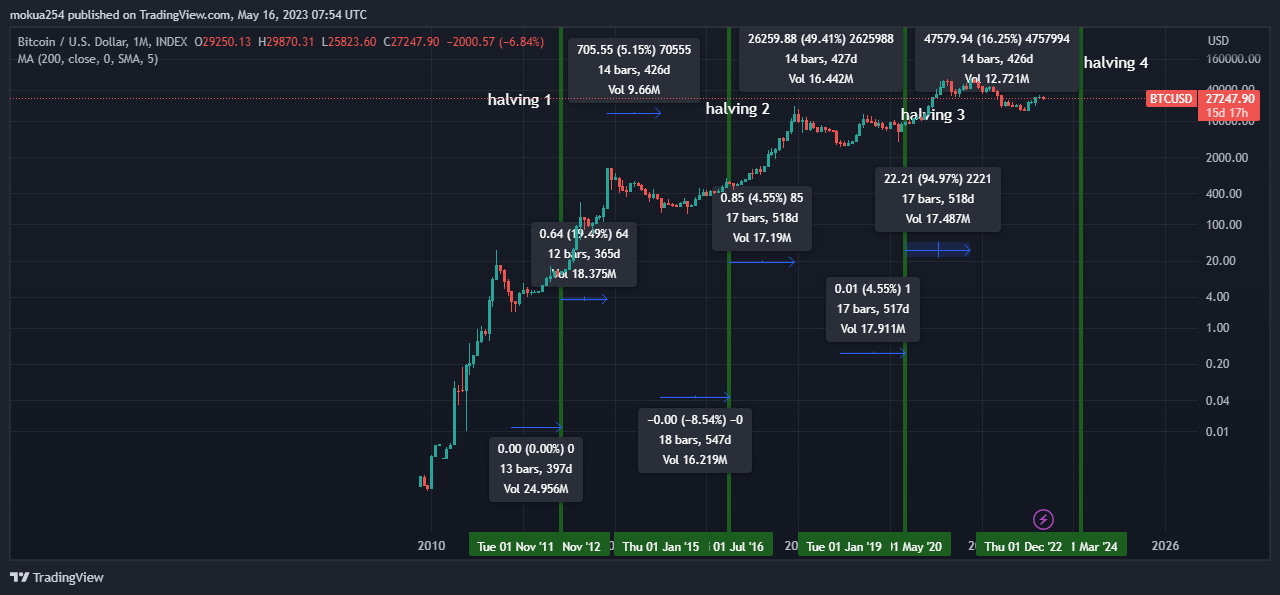
In conclusion, while the Bitcoin 4-year cycle theory can be an interesting tool to analyze past price movements, it should not be relied upon as the sole basis for investment decisions. There are many factors that can affect the price of Bitcoin, and past performance is not a guarantee of future results. Before investing in Bitcoin or any other cryptocurrency, it's important to do your own research and consider a variety of factors, including your own risk tolerance and investment goals.
Crypto market 2023 outlook
Wondering about the 2023 crypto market outlook? Keep in mind that the market can be volatile and unpredictable, and many factors can affect it. Stay informed, do your research, and consider multiple factors before making investment decisions in the rapidly evolving world of cryptocurrency.
The cryptocurrency market is known for its volatility, with prices fluctuating rapidly and sometimes unexpectedly. This volatility can be caused by a variety of factors, such as regulatory changes, adoption rates, market sentiment, and global economic conditions. It's important to stay informed about these factors and how they may impact the market.
Additionally, the cryptocurrency market is still relatively new and is constantly evolving. New technologies, regulations, and trends can emerge quickly and have a significant impact on the market. It's important to do your research and stay up to date on the latest developments in the industry.
Investors should also consider their own risk tolerance and investment goals before investing in cryptocurrency. Cryptocurrencies are known for their volatility, which can lead to significant gains but also significant losses. It's important to only invest what you can afford to lose and to diversify your portfolio to minimize risk.
Finally, investors should remember that past performance is not a guarantee of future results. While historical trends can provide useful information, they do not always repeat themselves in the future. It's important to approach any investment decision with caution and to do your own research. 2023 is likely to be a sideway year with slightly some upside:We are likely to be trapped between 30,000 USD and 15,000.
.png)
Crypto market 2023 outlook
Wondering about the 2023 crypto market outlook? Keep in mind that the market can be volatile and unpredictable, and many factors can affect it. Stay informed, do your research, and consider multiple factors before making investment decisions in the rapidly evolving world of cryptocurrency.
The cryptocurrency market is known for its volatility, with prices fluctuating rapidly and sometimes unexpectedly. This volatility can be caused by a variety of factors, such as regulatory changes, adoption rates, market sentiment, and global economic conditions. It's important to stay informed about these factors and how they may impact the market.
Additionally, the cryptocurrency market is still relatively new and is constantly evolving. New technologies, regulations, and trends can emerge quickly and have a significant impact on the market. It's important to do your research and stay up to date on the latest developments in the industry.
Investors should also consider their own risk tolerance and investment goals before investing in cryptocurrency. Cryptocurrencies are known for their volatility, which can lead to significant gains but also significant losses. It's important to only invest what you can afford to lose and to diversify your portfolio to minimize risk.
Finally, investors should remember that past performance is not a guarantee of future results. While historical trends can provide useful information, they do not always repeat themselves in the future. It's important to approach any investment decision with caution and to do your own research. 2023 is likely to be a sideway year with slightly some upside:We are likely to be trapped between 30,000 USD and 15,000.
.png)
where is the bitcoin bottom?
Finding the bottom of the Bitcoin market can be a challenging task, as the cryptocurrency is notoriously volatile and unpredictable. However, there are some strategies that traders and investors use to identify potential support levels where Bitcoin's price may stop declining and start to recover.
One approach is to analyze historical price data to identify key support and resistance levels. Traders can use technical analysis tools such as moving averages, Fibonacci retracements,Ellio wave principle,wyckoff accummulation and distribution phases, and trendlines to identify these levels. These tools can help traders identify potential buy and sell signals based on Bitcoin's price movements.
Below is a bitcoin monthly chart that helps identify potential tops and bottoms.With the help of the RSI indicator and support and resistances we can identify those potential tops and bottoms in the RSI that coincide with Bitcoin price tops and bottoms .
.png)
Another approach is to look at market sentiment and news events that could affect Bitcoin's price. News events such as regulatory changes, institutional adoption, or global economic conditions can significantly impact the cryptocurrency market. By monitoring news and social media sentiment, traders and investors can gain insights into market sentiment and potentially identify support levels where Bitcoin's price may stabilize.
In the realm of financial markets, a captivating dance unfolds: impulsive waves surge, driven by market conviction, while corrective waves ebb, soothing prior excesses. The impulsive 5 waves surge with purpose, propelled by optimism or fear, as bulls or bears take the lead. Then, corrective 3 waves restore balance, tempering the fervor and resetting the stage for the next mesmerizing act. Together, they compose Elliott Wave Analysis, revealing the hidden harmony within the market's mysterious rhythms.
.png)
Additionally, some traders and investors use fundamental analysis to evaluate Bitcoin's long-term prospects. Fundamental analysis looks at factors such as the technology behind the cryptocurrency, its adoption rate, and its potential use cases. By evaluating these factors, traders and investors can gain a better understanding of Bitcoin's intrinsic value and make more informed investment decisions.
Ultimately, there is no surefire way to find the bottom of the Bitcoin market. However, by using a combination of technical analysis, market sentiment analysis, and fundamental analysis, traders and investors can gain a better understanding of the cryptocurrency market and potentially identify opportunities to buy Bitcoin at a favorable price. As with any investment, it's important to do your own research and consider your risk tolerance before making any decisions.
Top 10 trading indicators
Interested in using trading indicators to improve your trading strategy? Discover the top 10 trading indicators commonly used by traders to make informed trading decisions. From moving averages to relative strength index, we'll delve into each indicator and provide examples of how they can be used. Take your trading game to the next level with these top 10 trading indicators!
Below is a profit taking and position building strategy proudly made by Open Cipher a quant firm in Kenya.It uses the RSI readings and generates signals that investors act apon :when the RSI below 25 and between 10 it opens a DCA function that triggers the investor to start accumulating but when the RSI reading is between 80 and 95 it triggers the investor to DCA out slowly as Bitcoin could have peaked in the short-term or for the cycle.
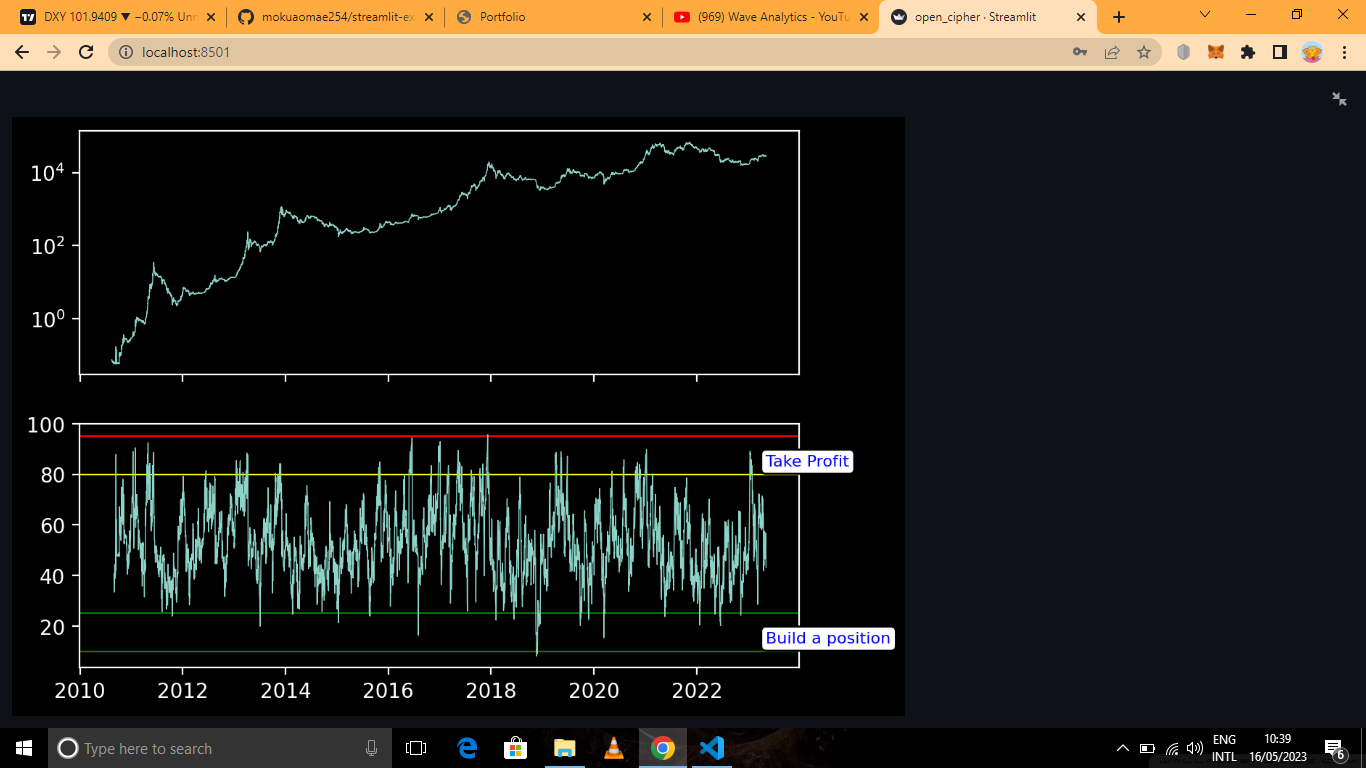
Below is a moving average strategy proudly made by Open Cipher a quant firm in Kenya.It gives investors a signal to get into Bitcoin once price action goes above the 200 daily ma and add more to their position when its retested .The strategy confirmed my early entry into Bitcoin at 15.5k .It gave me more than 100% on my investment.
